#enchodus
Text
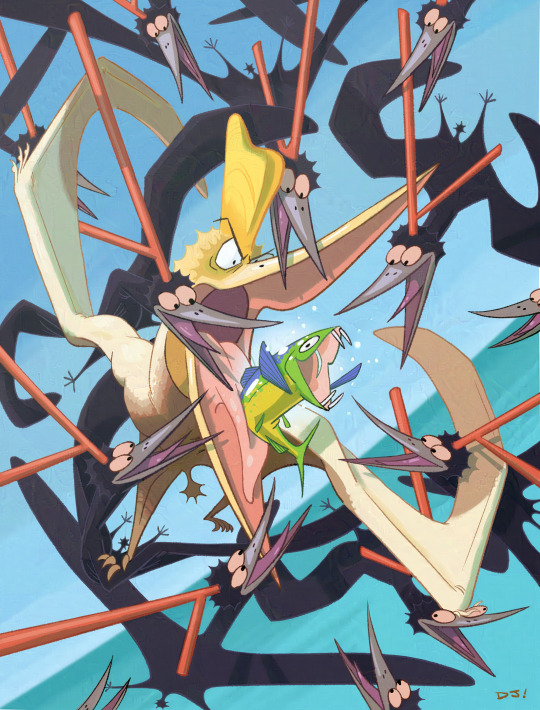
Kleptoparasitism. Pteranodon, Nyctosaurus, Enchodus
3K notes
·
View notes
Text
Month recap time!
This month's drawings:
- Johanna plays with some baby Scutosaurus
- Two male Enchodus try to woo a female, but scare the crap out of David
- Frida falls for a booby trap and is now the subject of interest of a Camptosaurus
- A baby Isisaurus thinks Twig is its parent




#drawing#dinosaur#hilda netflix#prehistoric planet season 2#life on our planet#johanna hilda#david hilda#frida hilda#twig the deerfox#Scutosaurus#Enchodus#Camptosaurus#Isisaurus
18 notes
·
View notes
Text

Enchodus fossil fish bones
7 notes
·
View notes
Text
Enchodus gladiolus i did as a part of my internship with the Edelman Fossil Park. Done in Clip Studio Paint

5 notes
·
View notes
Photo
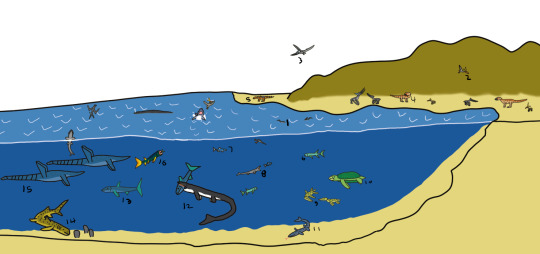
A Day in Niobrara
1. Hesperornis regalis 2. Nyctosaurus gracilis 3. Pteranodon longiceps 4. Claosaurus agilis 5. Niobrarasaurus coleii 6. Gillicus arcuantus 7. Enchodus petrosus 8. Platecarpus tympaniticus 9. Dolichorhynchops osborni 10. Protostega gigas 11. Clidastes prophython 12. Tylosaurus proriger 13. Bonnerichthys gladius 14. Ptychodus mortoni 15. Styxosaurus snowii 16. Xiphactinus audax 17. Cretoxyrhina mantelli
#niobrara#hesperornis#nyctosaurus#pteranodon#claosaurus#niobrarasaurus#gillicus#enchodus#platecarpus#dolichorhynchops#protostega#clidastes#tylosaurus#bonnerichthys#ptychodus#styxosaurus#xiphactinus#cretoxyrhina
2 notes
·
View notes
Text
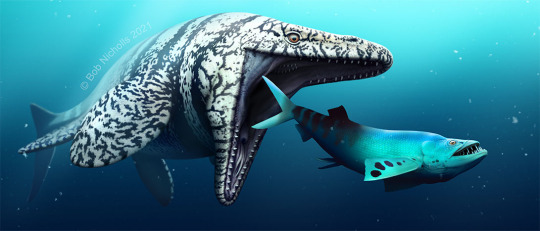
Todays random portfolio artwork is a gulping Platecarpus, a Late Cretaceous mosasaur, about to eat an Enchodus fish (I'm in the mood for things with big teeth!).
Commissioned by the Children's Museum of Indianapolis, for their exhibition information boards.
#Art#Painting#PaleoArt#PalaeoArt#SciArt#SciComm#DigitalArt#Illustration#Dinosaurs#Birds#Reptiles#Palaeontology#Paleontology
253 notes
·
View notes
Text
Fortune Seeker

A group of Serpentisuchops seeking fortunes at the open sea hoping to find more food sources,
Lucky for them, underneath that flock of Ichthyornis there are Enchodus waiting for weary ichthyornis to be swoop at.
Serpentisuchops Pfisterae is a genus of Polycotylid Plesiosaur from Late Cretaceous and know to dwell the Shallow Sea of Cretaceous North America.
23 notes
·
View notes
Text
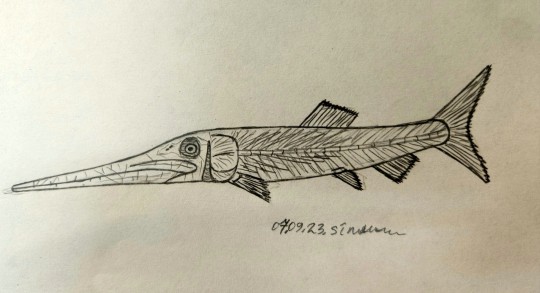
My take on Apateopholis laniatus
Funky enchodus relative
13 notes
·
View notes
Text
Alright, if I can be real with you all, one of the animals that I want to see the most show up in Prehistoric Planet season 2 is Ocepechelon. I’m not sure if any of y’all that don’t know aren’t ready for what this species looks like, but I’m very, very, VERY happy to show it off.
You folks might wanna strap in for a bit, but this is gonna be a doozy....
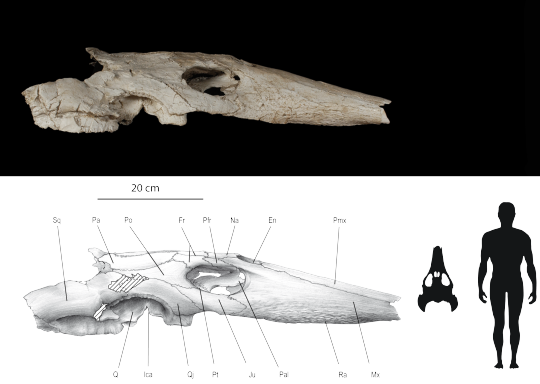
...What’s that? You people think this was some sort of ancient crocodile with a broken snout? Well, I really wouldn’t blame any of you, as not only were the scaly buggers extremely common back in Maastrichtian times, a good few species were found in this guy’s native range (the Ouled Abdoun Basin). However, something tells me that your folks AREN’T ready for what this guy really was.
Are you all ready?....
Annnnnnnnnnnnnnd.......

(Art made by Charlene Letenneur)
Yeah, that’s right; This thing was a frickin’ SEA TURTLE...with a SNOOT. Not only that, this guy was also one of the largest seas turtles that we know of. Even dwarfing the leatherbacks of today. Don’t believe me? Take a look and see how massive this absolute unit was.

While not as big as the largest specimens of Archelon, Ocepechelon was still a big boi, easily being alot bigger than the leatherback turtles of today’s oceans. With that in mind, you might think that this species fed on a similar diet to its relatives to get that big. Well, guess again! As if this Pingu-looking bastard wasn’t already full of surprises, it still has one MORE to give to the world. Guess what it was.
C’mon, guess. The clue should be obvious enough...
undefined
youtube
That’s right... Sometime during the history of life on our planet, there was a sea turtle that not only had the snoot of either a beaked whale or pipefish...it also fed in the SAME. EXACT. WAY as them. Evolution is one hell of a drug in terms of looks, but if it helps with a creature’s own survival, Mother Nature is allowed to trip balls as damn well as she pleases.
Now, with that said, I think I know just where in Season 2 would be perfect for this lovechild between a leatherback sea turtle and a beaked whale.

Not only did one of my own predictions came true (I.E., the baitball scene of my dreams), this presents a great opportunity for Ocepechelon to show up in the series. The following scenario presents itself as such.

(Art made by HodariNundu)
66 million years ago, in what would be the Ouled Abdoun Basin, the seas off of the north African coast were teeming with life, especially great big schools of fish. One such example would be a massive school of Enchodus. Huge schools of these prehistoric relatives of lancetfish would be a potential feast for massive ocean predators. Huge marine reptiles like Zarafasaura, along with large sharks like Squalicorax, would lead the chase, causing the baitball to be packed tighter and tighter together. It’s then where more and more predators join in for the great feast; Stratodus (A large, predatory fish with a long and flexible body), seagoing pterosaurs like Alcione and Tethydraco divebombing from the skies above to grab a beakful, a gharial-like mosasaur in the form of Gavialimimus, and other such predators, all working together to wear down the moving feast. And for any stray fish that somehow managed to escape the many jaws of the first few waves of arrivals, they’re suddenly sucked in by a large, darkish grey snout-like mouth. A lone Ocepechelon, accompanied by his entourage of small fish that stay by him for protection, has slowly swam into the feeding frenzy up above, picking off any stranglers that avoided the jaws of the other predators. The male turtle, as with many others of his kind, is cool with taking it slow and easy, being content with snacking on the few remaining stranglers that survived the previous waves of of hunters, all starting to get their fill as the baitball not only starts to get very small, but also starting to leave. As the other predators all leave the scene, the Ocepechelon is more than happy to suck up the rest of the Enchodus, leaving only but a few shimmering scales as he himself, along with his own school of fish, heads out into the big blue beyond.
That (frankly long) description is how I’d imagine how a segment featuring Ocepechelon would play out in Prehistoric Planet. Given how we finally got the teaser trailer for Season 2, it shouldn’t be long before we get more news on this batch of brand-new episodes. And who knows? Maybe out Pingu-snouted friend here will grace the world with his mere presence. I’m certainly bracing for it as we speak.

24 notes
·
View notes
Photo
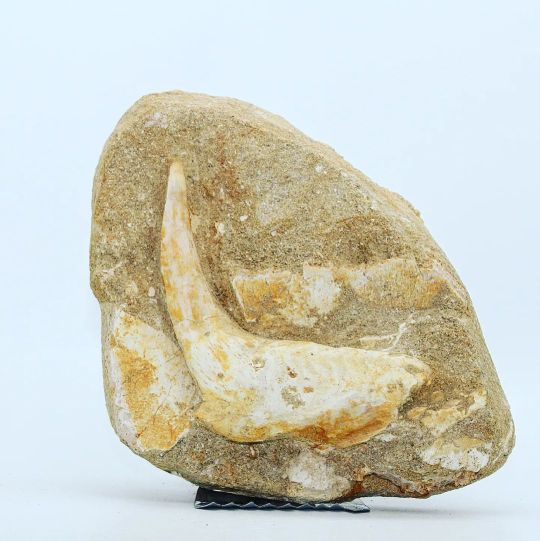
A nice Enchodus tooth with jaw in matrix for sale #Dinosaurs #jurassicworld #reptilesofinstagram #fossilseller #fossils #followforfollowback #follow #archeology #instagram #amazing #likeforfollow #youtube #viral #explorepage #trending #instagram #tiktok #like #follow #instagood #likeforlikes #memes #music #followforfollowback #viralvideos #photography #likes ##fossilshunter #paleontology https://www.instagram.com/p/Ceefqukt9nC/?igshid=NGJjMDIxMWI=
#dinosaurs#jurassicworld#reptilesofinstagram#fossilseller#fossils#followforfollowback#follow#archeology#instagram#amazing#likeforfollow#youtube#viral#explorepage#trending#tiktok#like#instagood#likeforlikes#memes#music#viralvideos#photography#likes#fossilshunter#paleontology
0 notes
Text
Critter of the Month: Diplodocus
Critter of the Month: Diplodocus
Meet Dippy! A giant with a heart of gold, life is never boring when this big guy is around. Nothing is out of reach! He’ll stick his nose into everything until every mystery is solved.
Happy Holidays! I hope you’ve been having a joyful and restful holiday season, or at least as restful as the holidays can get! 🙂
(more…)

View On WordPress
#Allosaurus#Art#characters#Christmas#critter page#dinosaur#Diplodocus#Dippy#doodles#Enchodus#Holidays#Sauropod#Scutellosaurus#Skittles#winter
3 notes
·
View notes
Photo
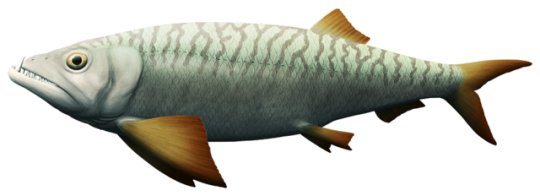
Almost-Living Fossils Month #02 -- The Saber-Toothed “Herring”
First appearing in the mid-Cretaceous, about 113 million years ago, Enchodus was a small-to-medium-sized genus of predatory fish. Different species ranged from a few centimeters to up to 1.5m in length (4′11″), with Enchodus gladiolus here being an averaged-sized example at about 60cm long (2′).
The most distinctive feature of these fish were the enlarged fang-like teeth in both their upper and lower jaws, over 6cm (2.4″) long in the largest individuals, which may have been a specialization for feeding on soft-bodied cephalopods.
Despite having been nicknamed “saber-toothed herrings”, they weren’t actually closely related to herrings at all, instead being part of the aulopiformes -- a group also containing modern lizardfish, lancetfish, and a different type of sabertooth fish.
Fossils of various Enchodus species have been found all over the world, and they seem to have been very common and important members of ancient marine ecosytems, occupying mid-level carnivore niches and in turn being eaten by other predators. Their remains have been identified within the preserved stomach contents of marine reptiles such as plesiosaurs and mosasaurs, as well as sharks and hesperornithean birds.
These toothy fish survived through the end-Cretaceous mass extinction and continued their success for almost 30 million years into the Cenozoic, with the last known fossils dating to just 37 million years ago in the Late Eocene. They probably didn’t survive much longer beyond that date, since there was an extinction event at the Eocene-Oligocene boundary (~34 mya), a period of sudden cooling that affected many marine animals at the time.
#almost living fossils month#science illustration#paleontology#paleoart#palaeoblr#enchodus#enchodontidae#saber-toothed herring#aulopiformes#actinopterygii#fish#art
123 notes
·
View notes
Text
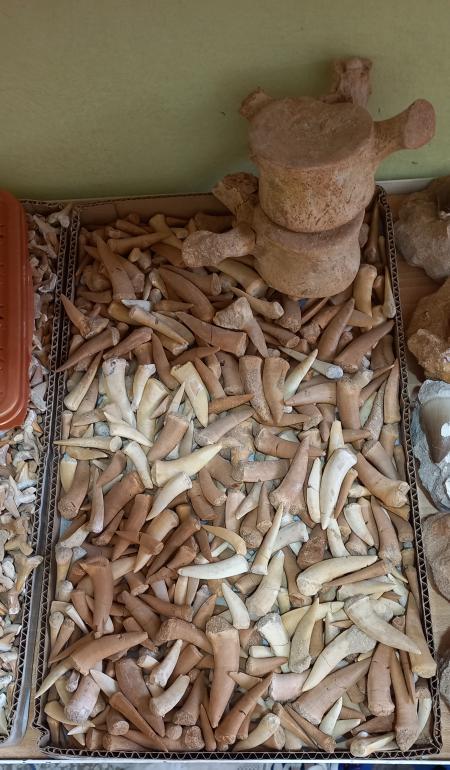
Enchodus fossil fish fangs
6 notes
·
View notes
Text



Quick reminder that Fossils for Sale UK is FUCKING AMAZING and that you should go buy all their fossils before I do.
I got all this for under £7, child me thought anything as old as a Megalodon would probably cost hundreds, but nah. The tooth from a Megs ancestral grandpa was £2.71 and all those Enchodus were £4 .29.
£4.29 is also the exact price for 20 chicken nuggets at McDonald's. Dudes, go buy some cool shit.
2 notes
·
View notes
Text
Enchodus libycus (Fish Tooth)
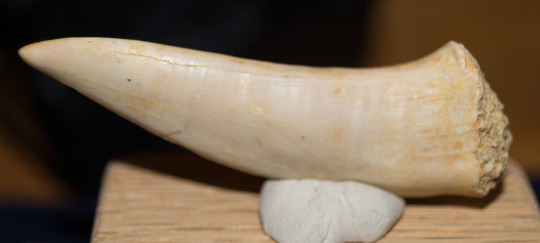
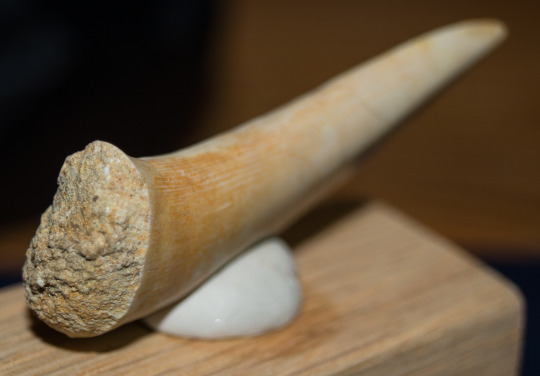

BB-F-0062
Location: Khouribga, Morocco
Period: Mesozoic / Cretaceous / Late / Maastrichtian
0 notes
Text
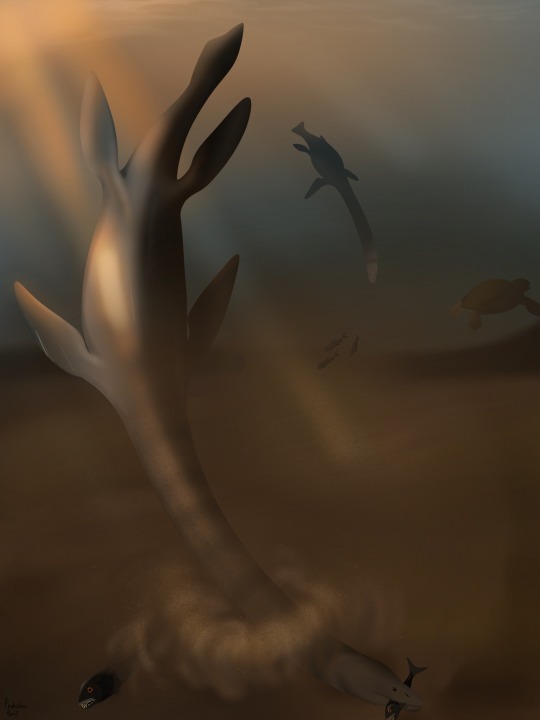
95 million years ago, in a shallow sea dividing what is now North America, an Enchodus gets caught by a hungry Thalassomedon.
#art#paleoart#drawing#paleontology#digital art#painting#not a dinosaur#marine reptile#Elasmosauridae#elasmosaurus#Protostega#Thalassomedon
51 notes
·
View notes